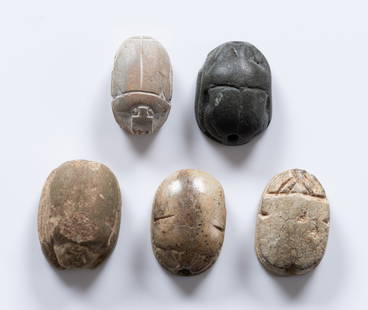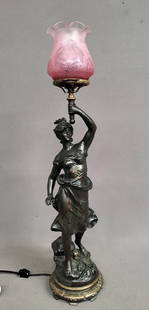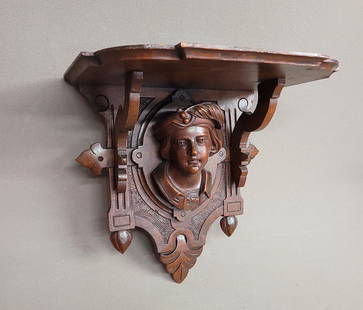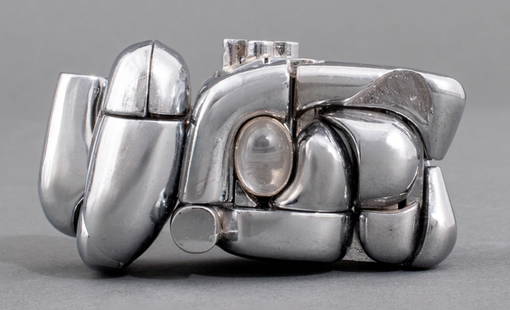
Egyptian Bastet Statuette
Similar Sale History
View More Items in Sculptures & CarvingsRelated Sculptures & Carvings
More Items in Sculptures & Carvings
View MoreRecommended Art
View More


Item Details
Description
26th Dynasty, 664-525 BC. A bronze figure of a sitting cat with tail curved around front paws; collar around neck with Eye of Horus pendant to the chest; two tangs to the base; mounted on a custom-made stand with inked inscription to the front 'CAT SACRED TO BAST'. [A video of this lot is available on the TimeLine Auctions website] 97 grams total, 80mm including stand (3 1/4"). Property of a Connecticut, USA, collector; formerly in the collection of Dr. John Winnie, St. Mary's, Georgia, USA. The cat was originally domesticated in Egypt during the pre-Dynastic period; as a primarily agrarian society, the ancient Egyptians had a distinct problem with mice, rats and snakes all of whom threatened the grain stores. By encouraging cats to live among them the Egyptians effectively domesticated the cat to act as protectors of their food supplies. The first primary feline god was Mafdet, a female deity who can be traced back as far as the First Dynasty of Egypt. As a feline goddess, she was associated with protecting against venomous bites especially those of snakes and scorpions which may have been due to the fact that cats are killers of snakes and scorpions. The more well-known goddess Bastet took Mafdet’s place as a guardian of Lower Egypt, the pharaoh, and the sun god Ra; she is often depicted in the Book of the Dead at the front of the solar boat cutting off the head of the serpent Apep. Although the cat cult was a religious movement by the beginning of the New Kingdom, it gained importance when Shoshenq I developed Bubastis, chief centre of worship for the goddess Bast, located east of the Nile Delta, into an important city. At the same time, Bast developed into an immensely popular and important deity representing fertility, motherhood, protection, and the benevolent aspects of the sun – along with Sekhmet, she was known as the Eye of Ra. The cult of the cat garnered a huge following, and thousands of pilgrims journeyed each year to Bubastis to celebrate. Herodotus visited the temple in 450 BC and described it in great detail. A canal gave the temple the appearance of a man-made island. In the courtyard was a grove of trees leading the way to the interior, containing a massive statue of Bast, and a great number of sacred cats, cared for by the temple priests with donations from pilgrims. Bubastis became a marketplace for merchants of all sorts; artisans came forth with thousands of bronze sculptures, such as this piece, and amulets depicting cats to worshippers of Bast. Herodotus wrote that the annual festival of Bast held in the city was one of the most popular of all, with attendees from all over Egypt, who would raft down the Nile celebrating and feasting all the way. When they arrived in Bubastis, they feasted yet more and made sacrifices to Bast.
Condition
Fine condition.
Buyer's Premium
- 29%
Egyptian Bastet Statuette
Estimate £5,000 - £7,000
2 bidders are watching this item.
Shipping & Pickup Options
Item located in London, ukSee Policy for Shipping
Payment

Related Searches
TOP


































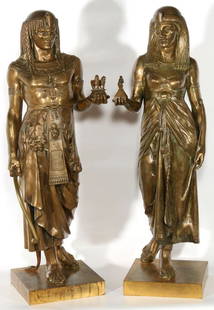





![EGYPTIAN PROFILE BUST IN STONE, 4TH CENTURY: EGYPTIAN PROFILE BUST IN STONE, 4TH CENTURY dimensions: 13 x 9 x 4 cm (5 1/8 x 3 1/2 x 1 5/8 in.) [with the wooden base]](https://p1.liveauctioneers.com/394/324829/174825226_1_x.jpg?height=310&quality=70&version=1711998515)










